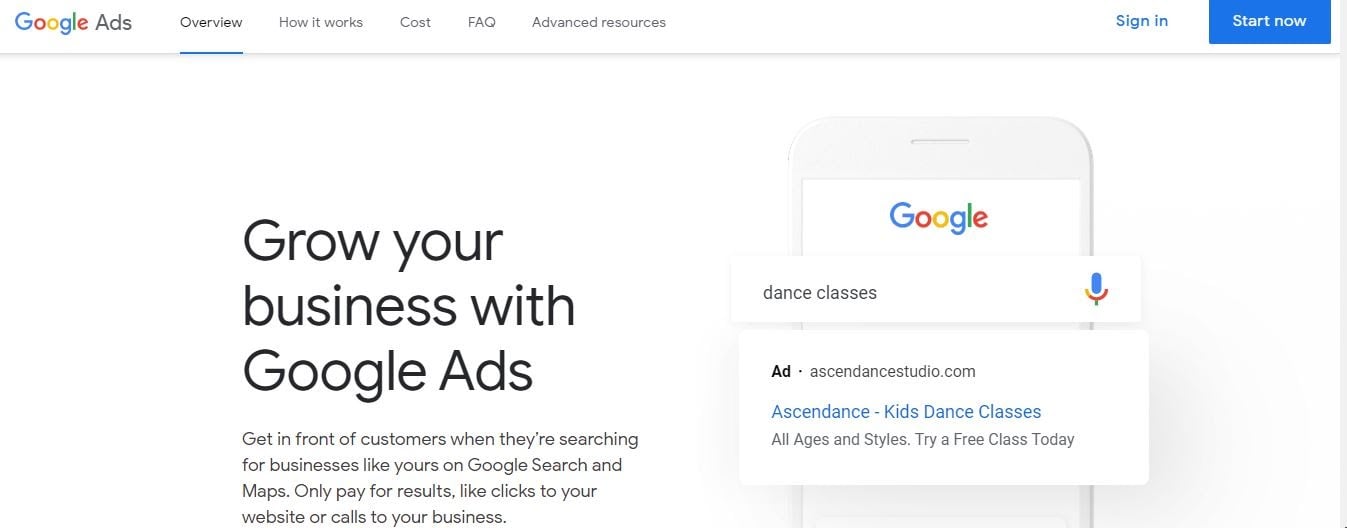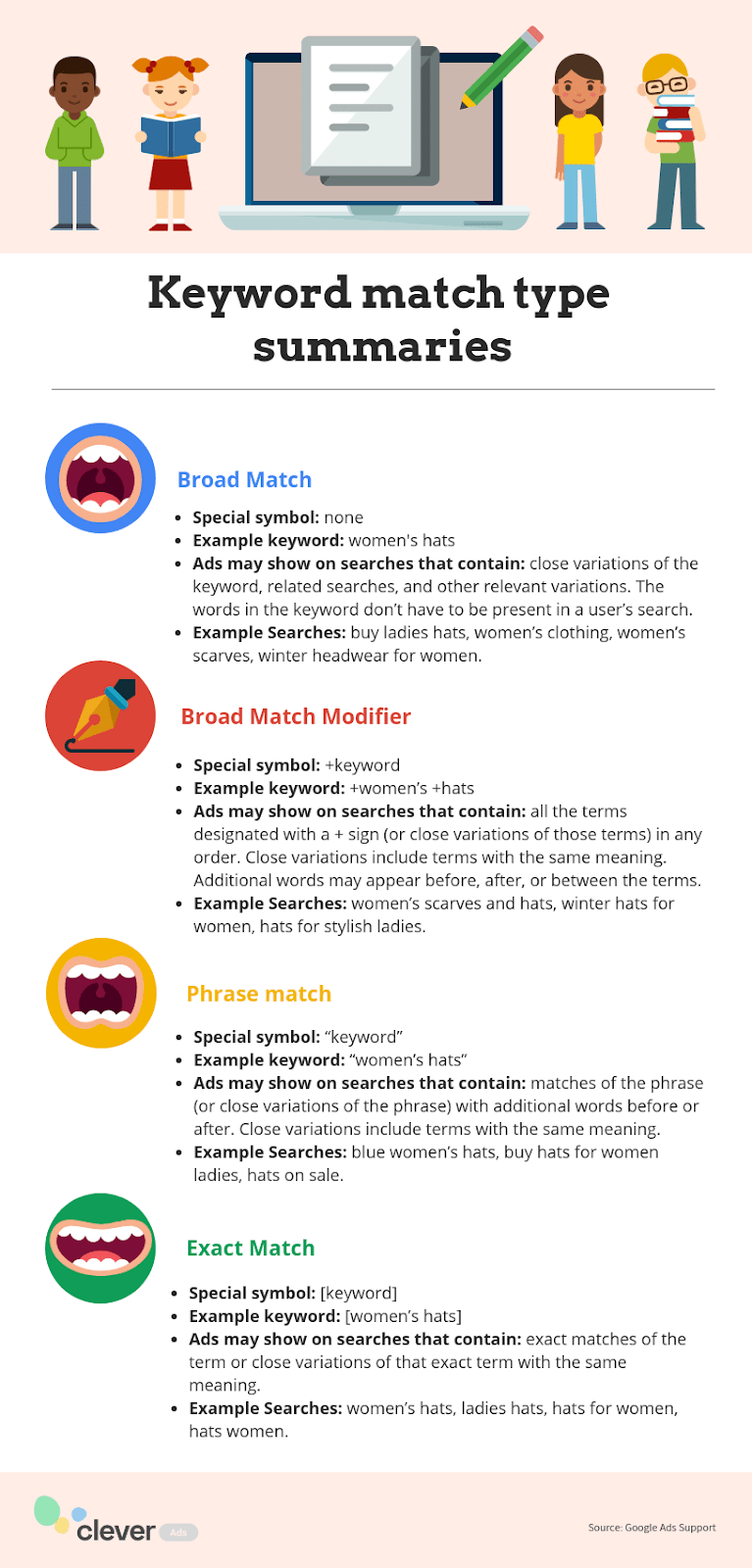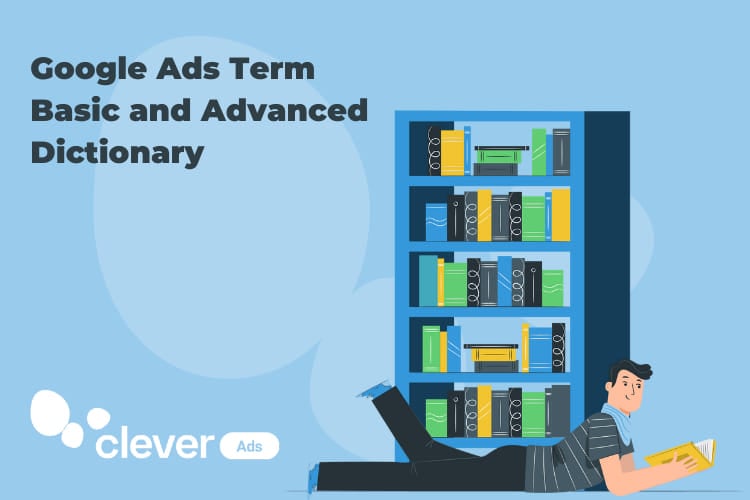Google Ads Term Basic and Advanced Dictionary
Today we want to help you understand the numerous and difficult concepts of Google Ads (formerly known as Google AdWords). Making it so when it comes to carrying out Marketing Strategies and Google Advertising Campaigns for your businesses, you’ll be able to understand everything and there will be no confusion. That’s why we’re here to give you a dictionary of Google Ads terms!
Google Ads terms you should know
There are many words that you will see in your google ads interface/dashboard. Here are a few of them:
AdSense
This is the first Google Ads term you should know and one of the products of Google’s online advertising network. Basically, it enables publishers to earn revenue by placing ads on their websites, whether it be by text, graphics, or advanced interactive advertising. These ads are managed and ordered by Google in association with Google Ads advertisers through a complex instant auction system.
Google AdSense uses a number of technologies to show relevant ads to visitors. This can be in the form of indexing website content, geographic location, and other factors (including specials from big brands). This ensures advertisers reach their intended audience, while delivering useful ads to users.
All AdSense resources come from the investment of Google Ads advertisers, which is a complex model of instant auction where the best performing ads compete for the publisher. Here you can read more about how AdSense exactly works.
Google Ads
It is a service and a program of the Google company that is used to offer sponsored advertising to potential advertisers. Sponsored Ads from Google Ads appear on the results page (SERP) along with the results of natural or organic searches.
SERPS
Otherwise known as Search Engine Results Page or Spanish Search Engine Results Page. This definition refers to the results that appear on the pages of Google, Bing, Yahoo or Yandex and usually show about 10 results on average.
Audience
On Display campaigns, audiences are groups of people with specific interests, intentions, and demographics that we want to show our ads to. Here are some Google Tips to increase your traffic site through your audience.
Banner
This is an advertising piece that is inserted in the spaces for AdSense on websites or blogs. These ads can be text, image, animated, video and/or sound and when you click on them they take you to the advertiser’s landing page or website.
Ad Group
An ad group contains one or more ads that share similar goals and each campaign is made up of one or more ad groups. Use ad groups to organize your ads based on a common theme. For example, divide ad groups based on the types of product or service you offer.

Campaigns
These are ads groups (ads, keywords, and offers) that share a budget, a geographic target, and other configuration parameters. Campaigns are often used to organize the categories of products or services you offer.
Your Google Ads account may have one or more active ad campaigns.
- Each campaign can contain one or more ad groups.
- Configuration parameters (such as budget, language, location, distribution of the Google Network, among others) can be set at the campaign level.
- You can create separate ad campaigns to serve ads in different locations or with different budgets.
Coverage
Coverage is the percentage of ad requests that returned at least one ad. Generally, coverage can help you identify sites where AdSense isn’t able to provide targeted ads.
Keyword Matching
Different types of keyword matching allows you to control which searches trigger an ad or not. Depending on which one we choose, we will have more opportunities for our ad to appear in queries and be seen by the appropriate users.
CPC/PPC (Cost Per Click/Pay Per Click)
Cost Per Click (CPC) is the price an advertiser is charged when a user clicks on their ad. In other words, the advertiser will only pay each time someone clicks on their ad, not just for showing it. The Maximum Cost Per Click is the maximum CPC that an advertiser is willing to pay for their ad.
CPA (Cost Per Acquisition)
This is the total cost invested in promoting a website to achieve a sale. For online advertising, it is usually the most advantageous system for the advertiser compared to other models such as CPC or CPM. This is because only one cost is associated for each sale made.
CPM (Cost Per Thousand Impressions)
This is the advertising cost of showing the same ad 1,000 times. It indicates the value given to every 1,000 impressions of the same banner.
CTR (Click Through Rate)
This is the percentage that shows how often users who see an ad click on the ad. It is one of the factors used to calculate the performance of keywords and ads. To calculate it, you must divide the number of clicks an ad receives by the number of times it is displayed (CTR = clicks / impressions).

Ad Extensions
These allow you to include more information in your ads and offer more reasons for customers to choose your company. In general, they tend to increase the click-through rate of the ads by several points. The different formats of the extensions include call buttons, information about the location, links to specific parts of the website and additional text. If you want more information about them, here’s 17 Ad Extensions which will help you to increase your sales.
Frequency
This is the average number of times that a unique user has seen your ad in a given period.
Impressions
This is the frequency with which an ad is published. An impression is counted every time an ad appears on a search results page or another website on the Google network. Every time your ad appears on Google or the Google network, an impression is counted.
Keywords
Keywords are words, phrases or terms that you or any user uses to search for something on the internet. Here are some basic tips to build a good keyword list.
Landing Page
This is a preliminary web page or landing page where you want to highlight something special, be it a product, or some novelty or promotion for a product. They are used when operating with SEM (search engine marketing), better known as Google Ads.

This is a metric used by Google, Yahoo!, and Bing that influences the ranking and cost per click of ads. To determine the position of the ad in a search engine, each ad is assigned a process that takes into account the offer and Quality Level.
Keyword Planner
This Google Ads tool doubles as a workshop where new and more experienced advertisers can create campaigns for the Search Network. You can use it to search for keywords and see how well a particular keyword list would perform. With the Keyword Planner, you can also choose competitive bids and budgets to apply to your campaigns.
Daily Budget
This is the maximum price that you are willing to pay each day for your campaigns.
Ad Ranking
This is the score used to determine the position in which an ad appears on the Google results page and whether or not it will be displayed. The ranking is calculated based on the price the advertiser wants to pay (bid), the quality level (expected click-through rate), the relevance of the ad and the landing page experience, and the expected impact of the added extensions and other possible ad formats. The higher the score in the ranking, the better positions you will have in the SERP.
Display Network
This is a collection of more than two million websites, applications and videos where your Google ads can appear. Display Network websites reach over 90% of Internet users worldwide. Here is more information on how the Google Display Network works.
Remarketing/Retargeting
This is a system that allows you to create adapted or personalized ads for users who previously visited a web page. It is a solution associated with Google Ads with the aim of achieving a better return on investment (ROI).
ROI (Return of Investment)
This refers to the metric that expresses the relationship between what is invested in a business and the profit obtained from said investment. It is often used to rate whether the investment is financially worthwhile.
ROI is a general metric of the financial performance of your business that shows how much you have gained or lost for each dollar, euro, peso or other currency you have spent.
Audience Segmentation
With this feature of Google Ads campaigns, you can segment your ad groups by audience to reach users based on who they are, what their interests and habits are, what they are looking for or how they have interacted with your company. This feature can improve the performance of your campaigns by reaching users who are browsing websites, using applications, or watching videos. Here is a bit more on how to create audiences from segments.
SEM (Search Engine Marketing)
This is defined as the set of digital marketing tools that serve to organize campaigns and publish paid ads on search engines. In other words, it helps to optimize the visibility of web pages through search engines.
Campaign Types
A campaign type determines where customers will be able to see your ads, but you can make this more specific by targeting your ads.
Campaign types include:
Destiny URL
This is the URL of the page on a website that users reach when they click on an ad. The domain of the destination URL has to match the domain of the visible URL. The destination URL is not shown in the ads, but the visible URL is.
Visible URL
This is the address of the web page that appears with the ad, usually in green. Visible URLs provide an idea of the site that will be accessed by clicking on your ad.
That’s all folks!
We hope that after this post you have a clearer understanding of the concepts that form Google Ads and how they work.
—————————————————————————————————————————————————
Sources:
Wikipedia, Inboundcycle, OinkmyGod, Google Ads Support, Humanlevel, Economipedia, Crecelatam, mdemarketingdigital, Inboundcycle, Hotmart, inbound-marketing.xtresmedia,




